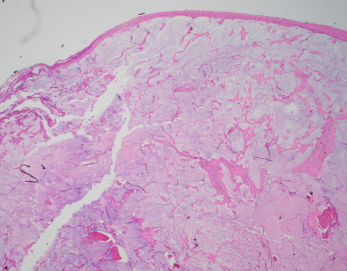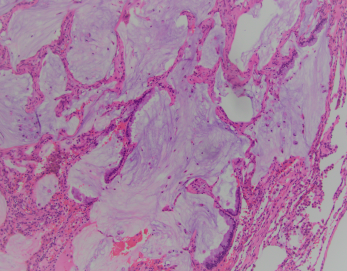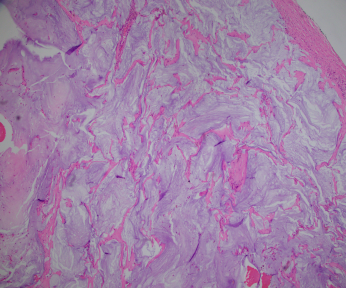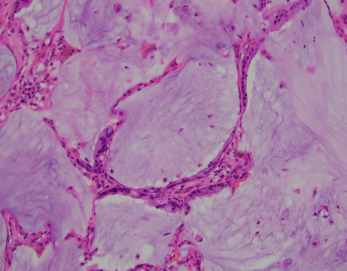Case History
A 56-year-old female with a right upper lobe lung nodule.
Which of the following is true regarding this lung neoplasm?
- Usually centrally located
- It has a bad prognosis
- EGFR mutation and ALK rearrangement are usually absent
- CDX2 and CK20 are negative


Correct Answer: C. EGFR mutation and ALK rearrangement are usually absent
Discussion:
Colloid adenocarcinoma is an indolent tumor with a favorable prognosis. Most commonly it presents as a well-circumscribed solitary nodule, with a soft gelatinous surface located in the periphery of the lung. Microscopically, low power view shows cystic areas with mucin deposition and efface alveolar walls with fibrous bands and focal areas showing alveolar walls lined by mucinous epithelium consisting of cuboidal and columnar cells. It is common to see signet ring cells floating in the mucin pools. The tumor usually does not show necrosis, mitosis, or hemorrhage. Inflammatory infiltrate is very often present.
The immunoprofile of this entity is not specific. It can be positive for intestinal markers such as CDX2 and cytokeratin 20 but it will be also positive for cytokeratin 7. TTF1 has shown to be positive in 50 % of cases while napsin A and surfactant apoprotein are usually negative.
The main differential diagnosis include metastatic gastrointestinal tract, pancreatic and breast neoplasm.
Molecular analysis is usually negative for EGFR mutation and ALK rearrangement but KRAS mutation can be present.
Reference:
-WHO book: Thoracic tumor 5th edition
-Oncological Surgical Pathology. Moran CA, Kalhor N, Weissferdt A. 1st edition

